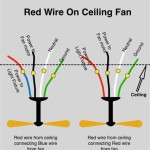What Is the U.S. Debt Ceiling?
The debt ceiling is a legal limit on the amount of debt that the U.S. government can borrow. This limit is set by Congress and must be raised periodically to allow the government to continue borrowing money to meet its obligations, such as paying for Social Security and Medicare benefits, as well as interest on the national debt.
The debt ceiling is a political issue, and debates over raising the ceiling have often led to partisan gridlock and government shutdowns. Some argue that raising the debt ceiling is necessary to avoid default and economic catastrophe, while others believe that it is a way to force the government to reduce spending and borrowing.
## How Does the Debt Ceiling Work?The debt ceiling is a statutory limit on the amount of debt that the U.S. Treasury can issue. The current debt ceiling is $31.4 trillion, which was set in December 2021. When the debt ceiling is reached, the Treasury can no longer borrow any more money to meet its obligations.
If the debt ceiling is not raised by the time the Treasury reaches the limit, the government will be unable to pay its bills. This could lead to a default on the national debt, which would have severe consequences for the U.S. economy and financial markets.
## Consequences of Defaulting on the National DebtDefaulting on the national debt would have severe consequences for the U.S. economy and financial markets. It could lead to a loss of confidence in the U.S. government, higher interest rates, and a recession.
Default could also cause the U.S. to lose its status as the world's reserve currency. This would make it more difficult for the U.S. to borrow money and trade with other countries.
## Debating the Debt CeilingThe debt ceiling is a political issue, and debates over raising the ceiling have often led to partisan gridlock and government shutdowns. Some argue that raising the debt ceiling is necessary to avoid default and economic catastrophe, while others believe that it is a way to force the government to reduce spending and borrowing.
There are a number of different perspectives on the debt ceiling. Some believe that it is an unnecessary restriction that serves no purpose other than to create political gridlock. Others believe that it is a necessary tool to force the government to live within its means and reduce spending.
## ConclusionThe debt ceiling is a complex issue with no easy solutions. It is a political issue that often leads to partisan gridlock and government shutdowns. It is also a matter of economic and financial importance, as defaulting on the national debt could have severe consequences for the U.S. economy and financial markets.

What Happens Now The Us Has Hit Debt Ceiling

Charting The Rise Of America S Debt Ceiling

Q A Everything You Should Know About The Debt Ceiling Wed 01 18 2024 12 00 Committee For Responsible Federal Budget

The U S Debt Ceiling Has Risen No Matter Who Is In Office

The U S Debt Ceiling And Its Global Implications

Us Debt Ceiling History Sgmoneymatters

Us Debt Ceiling Drama Piles On Yet More Unwanted Pressure Articles Ing Think

How Does Us Debt Rank Compared With The Rest Of World Business And Economy News Al Jazeera

Thirty Two Years Of Bipartisan Debt Ceiling Raises Mercatus Center

Us Debt Ceiling








